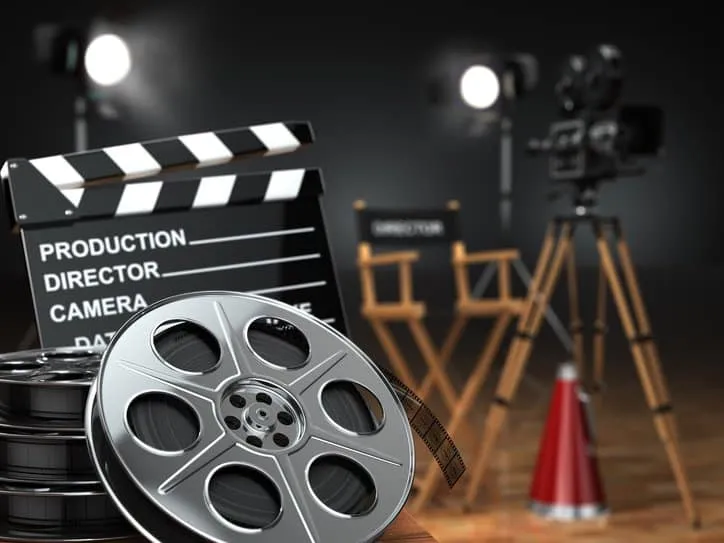ISO 4241:2019—Projection Film Leader

Does film have sound? If the reel has a thin yellow or rust-colored strip alongside the reel next to the sprockets and a thicker yellow-colored strip on the other edge of the reel, then the film has sound. However, vintage reels like 8mm, 16mm, and Super 8 film were not always equipped with the ability to catch audio. ISO 4241:2019—Cinematography – Projection Film Leader (Time-Based), Trailer And Cue Marks – Specifications specifies the assembly of film leaders.
What Is a Film Leader?
A film leader is a length of film attached to the head or tail of a film to assist in threading a projector or telecine. A leader attached to the beginning of a reel is sometimes known as a head leader, or simply head. A leader attached to the end of a reel known as a tail leader or foot leader, or simply tail or foot.
What Is ISO 4241?
ISO 4241:2019 specifies the makeup or assembly of time-based leaders and cue marks for 70 mm, 35 mm, and 16 mm motion-picture release prints. It states that the reduction ratio in the production of the head and foot leaders from 35 mm motion-picture film to 16 mm motion-picture film should be in accordance with ISO 4238. Information appearing in the leader printed lengthwise (in the direction of film travel) should read from left to right when viewed from the projection lens towards the projector light source with the head end of the film at the right. Information appearing in the leader printed upright should read normally when the reel is uppermost and the head of the film hangs down ready for threading.
The standard details requirements for the protective section, splicing frame, identification section, synchronizing section, and splicing frame for the head leader. For the trailer (foot) leader, ISO 4241:2019 details requirements for the splicing frame, runout section, and protective section.
Film Reels
Film reels consist of recorded strips that are made up of a plastic film structure. One side of the film has a coat of an emulsion consistency that contains tiny crystals. When those crystals are exposed to light through the lens, the emulsion darkens the pattern of the image being captured. When playing those captured images at a certain speed, it becomes a film. Hence, movies were once recorded on film and then shown to audiences by being run through a projector on reels. Films would often be dispersed between two or more reels due to their length, and a projectionist would need to switch from one reel to the next during showings to ensure a seamless transition between the reels.
Film Reels at the Movies
During the 3D film trend of the early 1950s, intermissions were necessary to play films. Even though many theaters used two projectors that could skip intermission by shifting from one reel to the other, 3D films required the use of both projectors: one for each stereoscopic image. So, an intermission allowed the change of reels on both projectors.
Movies traditionally were filmed and shot on celluloid film (typically 35 mm stock). In the 2000s, Hollywood started to capture films digitally. It was not until 2013, however, that digitally shot films were more common than celluloid productions. In 2013, it was estimated that 92% of movie theaters in the United States had converted to digital, with 8% still playing film. Hence, now, the built-in intermission has been phased out of films since advances in projector technology have made reel switches either unnoticeable or non-existent—in digital projection, reels do not exist.
Are Film Reels Still Used Today?
While digital projection has become the norm with smaller cameras and digital projectors in cinemas, filming on reel is still a common practice and many filmmakers still may choose to shoot their movies on film. They choose this for simplicity, efficiency, nostalgia, and appearance. Some filmmakers love the way movies shot on film look, and they believe that the color appears better on film than digital recordings. Some maintain that film is easier to edit than digital files. Despite digital filming becoming standard, there are still many movies shot on film every year. Some recent major movies shot mostly on film include La La Land (2016), The Hateful Eight (2015), Wonder Woman (2017), and Little Women (2019).
ISO 4241:2019—Cinematography – Projection Film Leader (Time-Based), Trailer And Cue Marks – Specifications is available on the ANSI Webstore.







The presence of a thin yellow or rust-colored strip on film reels’ edges indicates sound capability. ISO 4241:2019 details film leader specifications, defining the head and foot leaders for 70 mm, 35 mm, and 16 mm motion-picture release prints. Film reels, once integral to projecting movies, saw changes with digital technology, eliminating the need for intermissions and reel switches. Despite digital dominance, some filmmakers still opt for the aesthetic and nostalgic appeal of shooting on film, citing qualities like superior color and ease of editing. Notable recent films shot on film include “La La Land” and “The Hateful Eight.”